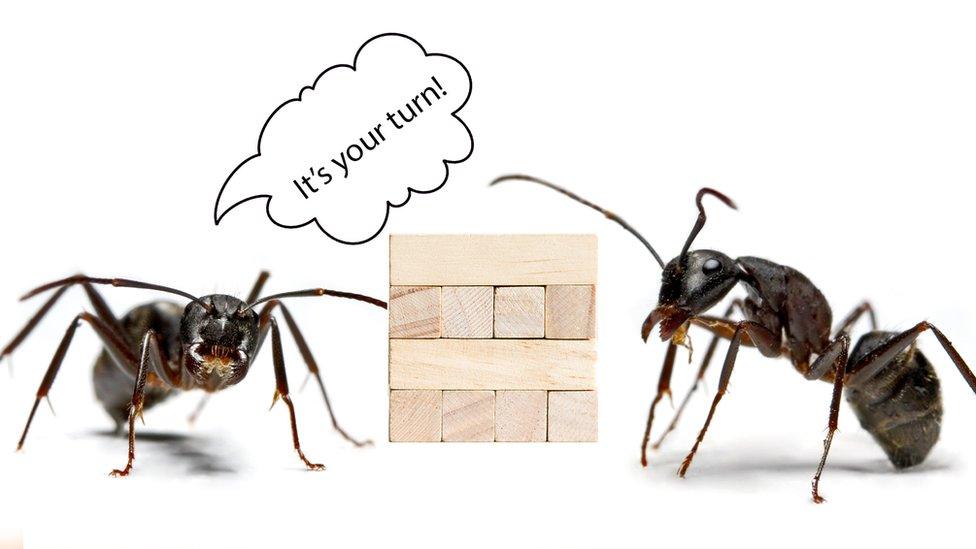Study into how ants move soil when digging tunnels
- Published
- comments

A new study has been looking into whether ants are able to identify soft grains of soil when building their tunnels underground - similar to how we play Jenga!
Scientists at the California Institute of Technology (Caltech) used X-ray scanners to study how ants tunnel their way through soil in cups.
They found that the insects can't identify loose grains of soil, but they have "evolved to dig according to the laws of physics".
Mechanical engineer Jose Andrade, who worked on the study, said: "We didn't interview any ants to ask if they know what they're doing, but we did start with the idea that they dig in a deliberate way.
"Our theory was maybe ants were playing Jenga."
When playing Jenga, some blocks aren't moveable because of the weight from the blocks directly above pressing down on them - that is force chain.
In a similar way some parts of the soil will be compressed by the force of the material above it so will be less easy to move.
To play Jenga, a player must tap to feel if the loose block would affect the structure above it if it's removed
What was the aim of the study?
The aim of the study was to find out whether ants are just blindly digging, or if they were able to sense the force chains in the grains of soil.
The team proposed that ants could possibly feel around the soil to look for loose grains that could become loose and be removed but not affect the structure above it - exactly how you would play Jenga.
An ant's nest is made up of lots of tunnels that connect to each other
Ant colonies live in nests that are a network of tunnels dug by the worker ants and they can reach up to 25ft underground.
Compared to the size of the ants, these nests are huge, and they are like a miniature city for them. Some nests for certain species of ants even have dedicated areas for nurseries and… toilet spaces.
Can ants sense if they shouldn't move a grain of soil, so that the tunnel doesn't collapse?
What did the experiments involve?
The team at Caltech worked with lots of ants in cups of soil, where they monitored their behaviour.
By using an X-ray scanner, the team could create a 3D snapshot of the tunnels the ants were digging.
The ants weren't always so easy to work with though - it took up to a year to collect the data.
Ants are very clever when they work together and can even build bridges using their bodies!
- Published11 February 2019
- Published18 August 2021
- Published6 June 2022
